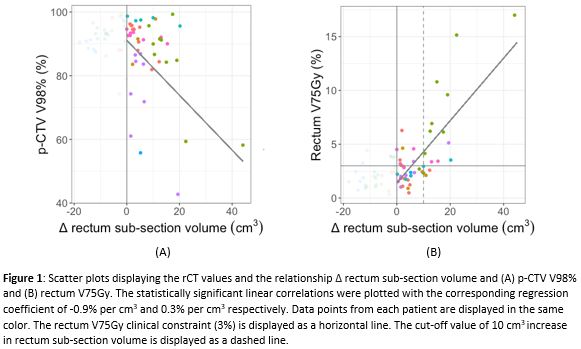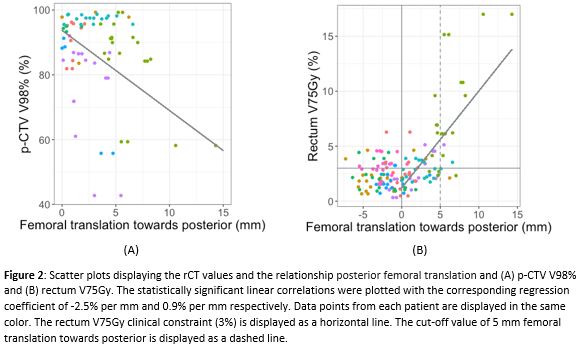Anatomical robustness of a proton planning class solution for high-risk prostate cancer
Rasmus Klitgaard,
Denmark
PO-1957
Abstract
Anatomical robustness of a proton planning class solution for high-risk prostate cancer
Authors: Eline Visser1, Stine Petersen1, Sofie Tilbæk1, Lise Bentzen2, Heidi Rønde1, Liliana Stolarczyk1, Anne Vestergaard1, Tanja Johansen1, Rasmus Klitgaard1, Sara Pilskog3,4, Jimmi Søndergaard5, Morten Høyer1, Ludvig Muren1
1Aarhus University Hospital, Danish Centre for Particle Therapy, Aarhus, Denmark; 2Vejle Hospital, University of Southern Denmark, Department of Oncology, Vejle, Denmark; 3University of Bergen, Department of Physics and Technology, Bergen, Norway; 4Haukeland University Hospital, Department of Oncology and Medical Physics, Bergen, Norway; 5Aalborg University Hospital, Department of Oncology, Aalborg , Denmark
Show Affiliations
Hide Affiliations
Purpose or Objective
Proton therapy for prostate cancer patients is challenged by inter-fractional anatomical variations. In preparation for a randomized trial, the aim of this study was to evaluate the robustness towards anatomical changes of a proton treatment planning class solution for high-risk prostate cancer patients and to identify geometric predictors for dose degradations.
Material and Methods
Treatment plans and 74 repeat CT scans (rCTs) from eight patients with high-risk prostate cancer were analyzed. The four-field treatment planning class solution (two lateral oblique and two posterior oblique beams) created on the planning CTs was applied to the rCTs, matched on prostate fiducial markers and subsequently recalculated. A rectum sub-section was created of the rectum on the axial CT-slices that also contained the prostate. Plan robustness was investigated by determining if V95%≥98% for both the prostate (p-CTV) and the combined regional elective lymph node and seminal vesicles target (ln/sv-CTV). Changes in bladder volume, rectum sub-section and femoral position were associated with p-CTV coverage and the potential violation of normal tissue dose constraints by utilizing a linear mixed model. If a statistically and clinically significant correlation was found, finding a cut-off value useful for clinical application was explored.
Results
The treatment plan was robust with respect to p-CTV coverage in 69/74 rCTs and in 65/74 rCTs for the ln/sv-CTV. The rectum V75Gy dose constraint (≤3%) was exceeded on 27/74 rCTs. An increase in rectum sub-section volume, increase in air in the rectum sub-section and posterior femoral translation were correlated with both p-CTV V98% dose degradation and rectum V75Gy dose constraint violation. Increase in rectum sub-section volume was correlated with p-CTV V98% and with rectum V75Gy with regression coefficients of -0.9%/cm^3 and 0.3%/cm^3 respectively (p<0.001) (Fig. 1). Posterior femoral translation was correlated with p-CTV V98% and with rectum V75Gy with regression coefficients of -2.5%/mm and 0.9%/mm respectively (p<0.001) (Fig. 2). A cut-off value for an increase in rectum sub-section volume of 10cm^3 and for a posterior femoral translation of 5mm resulted in a sensitivity for detecting rectal dose violation of 44% and 33% respectively and a specificity of 91% and 94% respectively in this cohort.


Conclusion
Our proton treatment planning class solution for high-risk localized prostate cancer was overall robust but the rectal dose constraint was exceeded in more than one-third of the recalculations. Increased rectum sub-section volume, increased air in the rectum sub-section and posterior femoral translation should be monitored because of their adverse effect on p-CTV coverage and rectal dose.